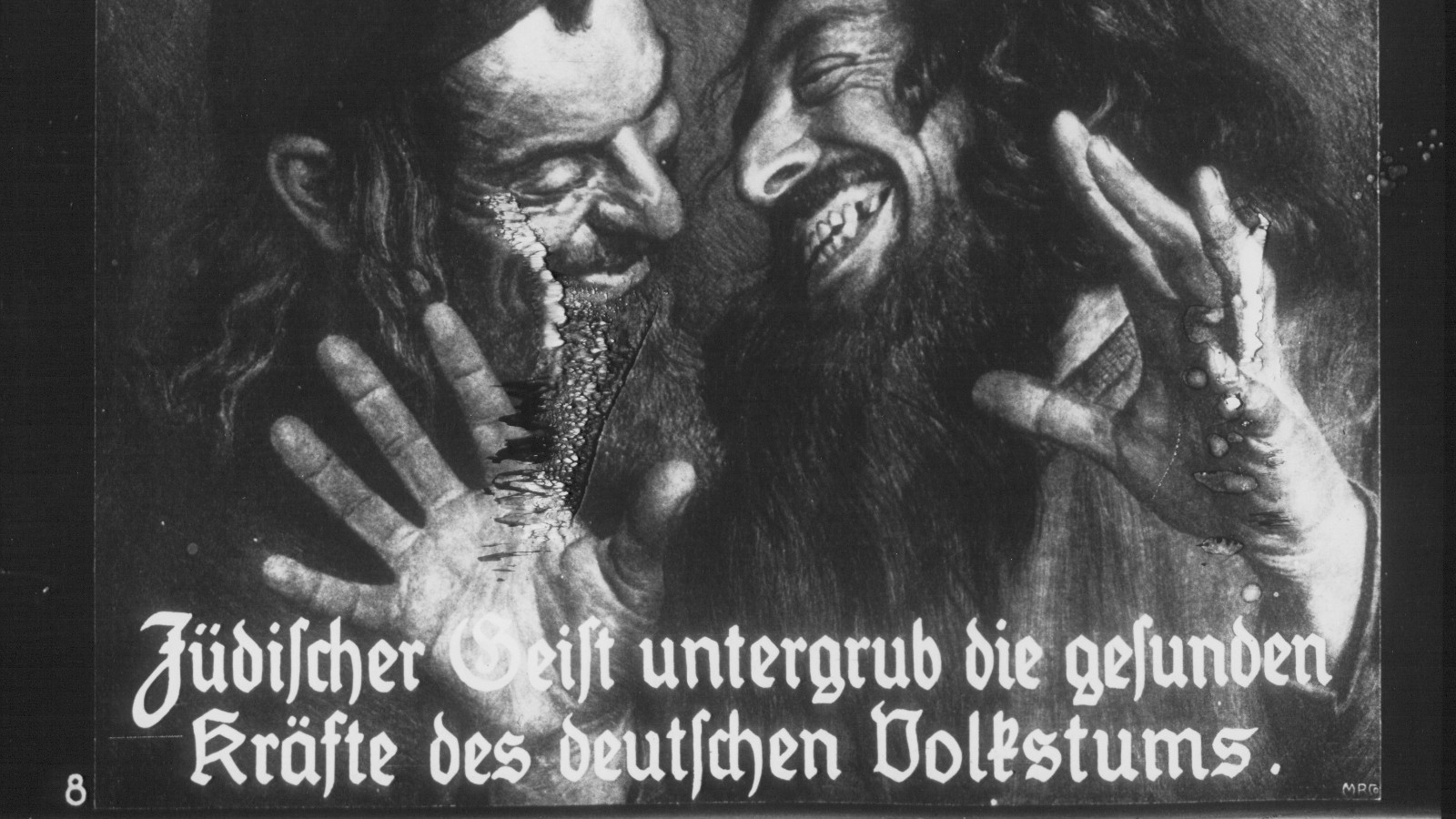Antisemitism is the term used to refer to prejudice or discrimination directed against Jews. The term was coined in the 19th century and the phenomenon itself reached its apex in the Nazi era, when racially based hatred of Jews, rooted in dark conspiracies about Jewish power, culminated in the murder of six million European Jews. But many believe the roots of antisemitism go back to the dawn of Christianity and the charge that Jews were responsible for the killing of Jesus.
READ: How Do You Define Anti-Semitism? It’s Complicated.
In contemporary times, overt expressions of antisemitism are not widely tolerated in Western countries. However, classical antisemitic stereotypes about Jews persist and occasionally find expression in public discourse. Anti-Jewish violence and acts of vandalism and intimidation remain a global problem, with the number of reported anti-Semitic incidents in the United States and Europe spiking in recent years, according to a number of studies.
Anti-Jewish violence also tends to increase during times of unrest in the Middle East, leading some to believe the nature of antisemitism is morphing into hatred of Israel, a development that has been called the “new antisemitism.” In this view, excessive criticism of Israel or challenging its right to exist crosses the line from legitimate criticism into anti-Jewish bigotry. However, others say that opposing Israeli policies or even challenging Israel’s right to exist are legitimate viewpoints and do not necessarily imply hatred of Jews.
European Anti-Semitism Before the Holocaust
Antisemitism is sometimes called the world’s oldest hatred. The term itself is commonly attributed to Wilhelm Marr, a 19th-century German journalist who believed that Jews were racially distinct from Germans and could never be assimilated into German culture. Hatred of Jews, however, is much older, dating by some accounts to the early Christian era and the belief that Jews were collectively guilty of killing Jesus — a view that remained Catholic doctrine until 1965. For centuries, anti-Jewish ideas found their way into the writings of some of history’s most prominent and oft-quoted Christian thinkers, among them Saint Augustine, Martin Luther and Thomas Aquinas.
In Europe during the Middle Ages, edicts barred Jews from citizenship, owning land, marrying Christians, serving in government and joining various professional guilds. A number of stereotypes about Jews emerged in this period, including the myth that Jews have horns and that they are greedy and money-grubbing, a belief given expression by Shakespeare in the character of Shylock from “The Merchant of Venice.” The myth that Jews engage in ritual murder led to blood libel, the claim that Jews use the blood of Christian children for the making of Passover matzah.
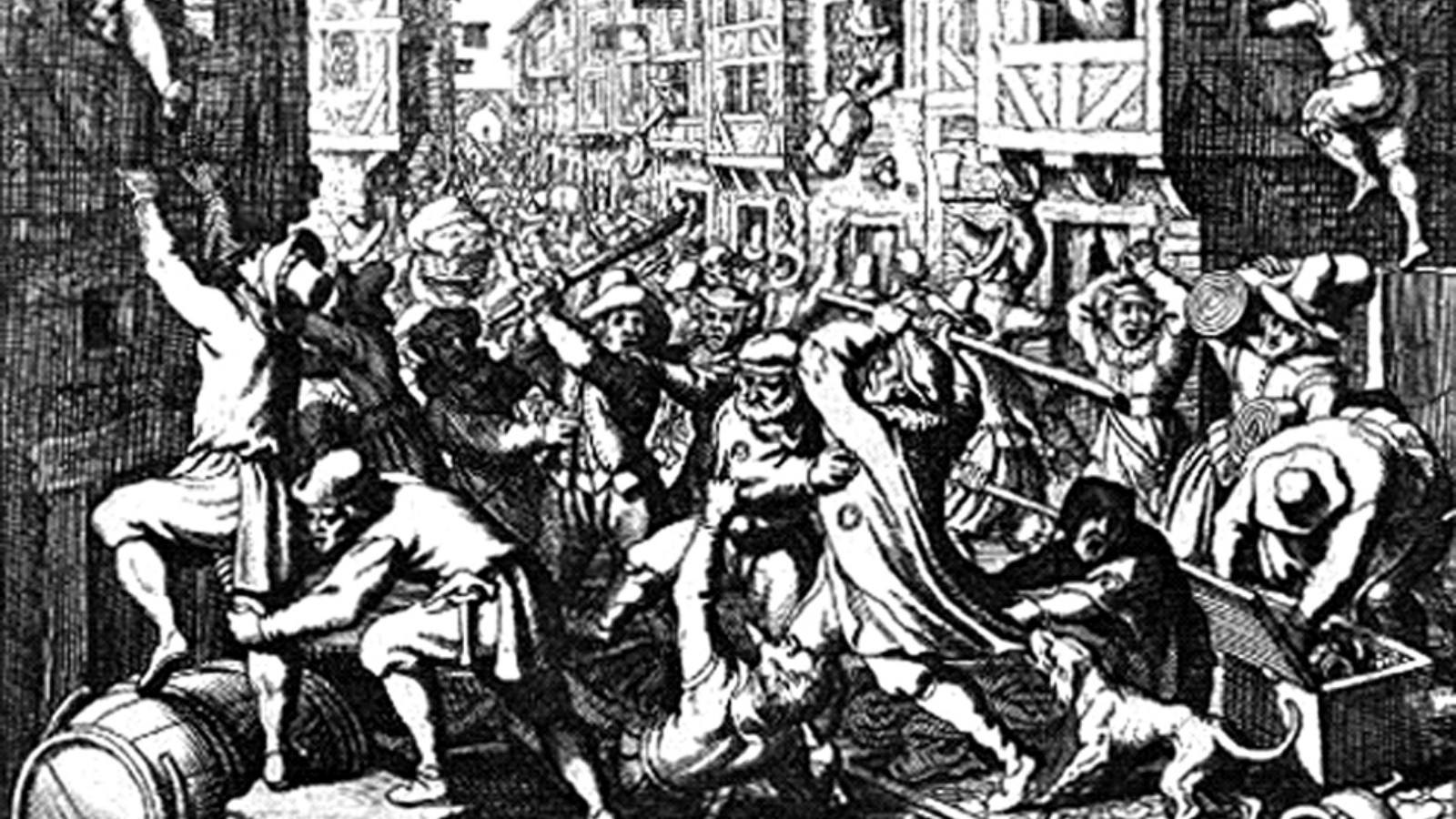
Anti-Jewish stereotypes were often used a pretext for collective punishment of Jews. During the Crusader period, Christian armies en route to liberate the Holy Land from Muslim control swept through Jewish communities, raping and massacring along the way. Beginning in the 13th century European Jews were forced to convert to Christianity or were expelled from a number of countries, most famously Spain in 1492, uprooting a long established and highly accomplished Jewish community. The belief that Jews were responsible for the Black Death in the 14th century led to the violent annihilation of countless Jewish communities throughout Europe. Jews were also commonly scapegoated for problems as varied as pandemics and crop failures. Anti-Jewish pogroms, or riots, occurred periodically in Europe throughout the late Middle Ages and into the modern period.
Even after the emancipation of Europe’s Jews beginning in the late 18th century, when Jews were no longer restricted to ghettos and were allowed full citizenship rights in many countries, antisemitism persisted in Europe. “The Protocols of the Elders of Zion,” a forgery that purported to be minutes of the secret meetings of Jewish leaders bent on world domination, was first published in Russia in 1903 and later translated and disseminated widely. Eastern European pogroms factored into the decisions of millions of Jews to emigrate to the United States beginning in 1880. (The desire for better economic opportunities was also a critical factor.) The prosecution of Alfred Dreyfus, a French Jewish army officer falsely convicted of treason in 1894, came to be seen as a symbol of the enduring perniciousness of European anti-Semitism.
The Holocaust and its Aftermath
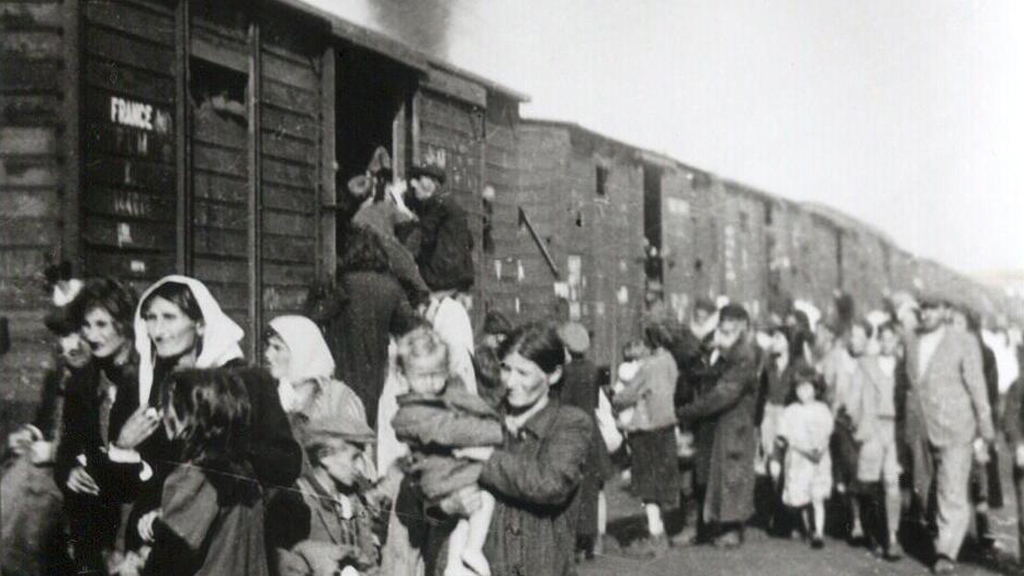
In the 20th century, antisemitism took on a distinctly racial quality. Nazi-era propaganda portrayed Jews as biologically distinct from white Europeans and possessing telltale physical characteristics, including large hooked noses and thick curly hair. Adolf Hitler’s belief that Jews were racially inferior and posed a threat to the pure blood of Aryans inspired the Nuremberg Laws of 1935, which prohibited sex and marriage between Jews and Germans and barred Jews from German citizenship. Eventually it would lead to Germany’s attempt to exterminate the Jewish people.
After the Holocaust, overt expressions of anti-Semitism ceased to be widely tolerated in Western Europe, and in some countries, Holocaust denial and the display of Nazi symbols were criminalized. In 1965, the Catholic Church adopted Nostra Aetate, which declared that modern Jews could not be held collectively responsible for the killing of Jesus, removing the theological justification for centuries of European anti-Semitism. This doctrinal shift has ushered in an era of unprecedented Jewish-Catholic reconciliation, though small pockets of traditionalist resistance to the change persist within the church.
As the memory of the Holocaust has receded in the postwar period, some of the taboo against explicit antisemitism has weakened and some right-wing European parties have openly embraced Nazi-era symbols and rhetoric. However, several countries have prosecuted individuals for Holocaust denial.
Antisemitism in the United States

American Jews have never suffered the systematic denial of rights comparable to what their coreligionists endured in Europe. The U.S. Constitution, with its explicit guarantee of freedom of religion, prevented adoption of the explicitly anti-Jewish laws prevalent in Europe over the centuries. But with the arrival of large numbers of Jews in the late 19th century, and their rapid socio-economic advancement in the early 20th, Jews came to face exclusion from various clubs and organizations, tightened admissions quotas at institutions of higher learning, and restrictions from certain resorts and residential areas.
One notable antisemitic incident in American history, which some compared to France’s Dreyfus Affair, was the 1915 lynching of Leo Frank, whose death sentence for murder had earlier been commuted by the governor of Georgia due to questions about his guilt. The case drew national attention and led to the establishment of the Anti-Defamation League.
Explicit public antisemitism was rare but not unheard of in modern America. In the 1930s, Charles Coughlin, a Michigan priest, began using his radio program to advocate anti-Semitic ideas and marshal support for Adolf Hitler. Henry Ford, the famed American car manufacturer, published the four-volume “The International Jew” in the 1920s, which was later translated into German and embraced by the Nazis. Aviator Charles Lindbergh, a member of the America First Committee that opposed intervention in World War II, claimed Jews wielded too much influence over American politics and were eager to drag the country toward war.
In the 1960s, antisemitism was embraced in certain quarters of the growing black nationalist movement. In 1970, black activist Stokely Carmichael famously called Hitler the greatest white man in history. And Nation of Islam leader Louis Farrakhan has long railed against Jews and their supposed control of the American government. Similar ideas have also found support among American white nationalists, most prominent among them David Duke, a former KKK leader and former member of the Louisiana state legislature.
Antisemitism in the Muslim World
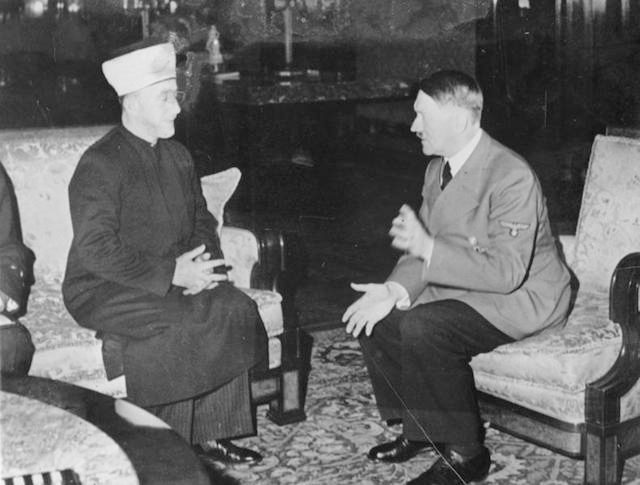
On the whole, Jews have historically fared far better under Muslim rule than in Christian Europe. Though anti-Jewish stereotypes do exist in Islamic sources, there is nothing to rival the extent of anti-Jewish sentiment that exists in Christian sources, nor is there a history of violence and persecution equal to what Jews faced in Europe. Jews living in Muslim lands were accorded a second-class citizenship that afforded certain protections while reinforcing subordination to full Muslim citizens, forcing Jews to pay higher taxes and wear distinctive badges or clothing. According to the historian Bernard Lewis, the latter requirement was enforced erratically, and was one of the few instances of Christian Europe adopting a tactic of Jewish segregation from the Muslim world.
For the most part, antisemitic ideas that took root in the Muslim world were European imports, a trend Lewis dates to the 19th century. By the 20th century, some Arab leaders were openly embracing the Nazis, most famously Haj Amin al-Husseini, a hardline Palestinian nationalist who met with Hitler in 1941. Following the establishment of Israel, antisemitism increased dramatically in the Middle East.
Today, signs of European antisemitism are rife across the Arab world. As of 1986, there were at least nine Arabic translations of the “Protocols of the Elders of Zion.” Arab media routinely use antisemitic imagery and promote conspiracy theories reminiscent of Nazi-era propaganda. Tel Aviv University researcher Esther Webman has documented how leaders of the militant Lebanese group Hezbollah routinely conflate Zionism and Judaism, and Israelis and Jews, implying that resistance to Israel is part of the long history of opposing the Jewish quest for world domination. According to the ADL, the Middle East scores highest in global surveys of antisemitic sentiment, with an estimated 200 million people there harboring antisemitic attitudes.
Anti-Zionism and Antisemitism
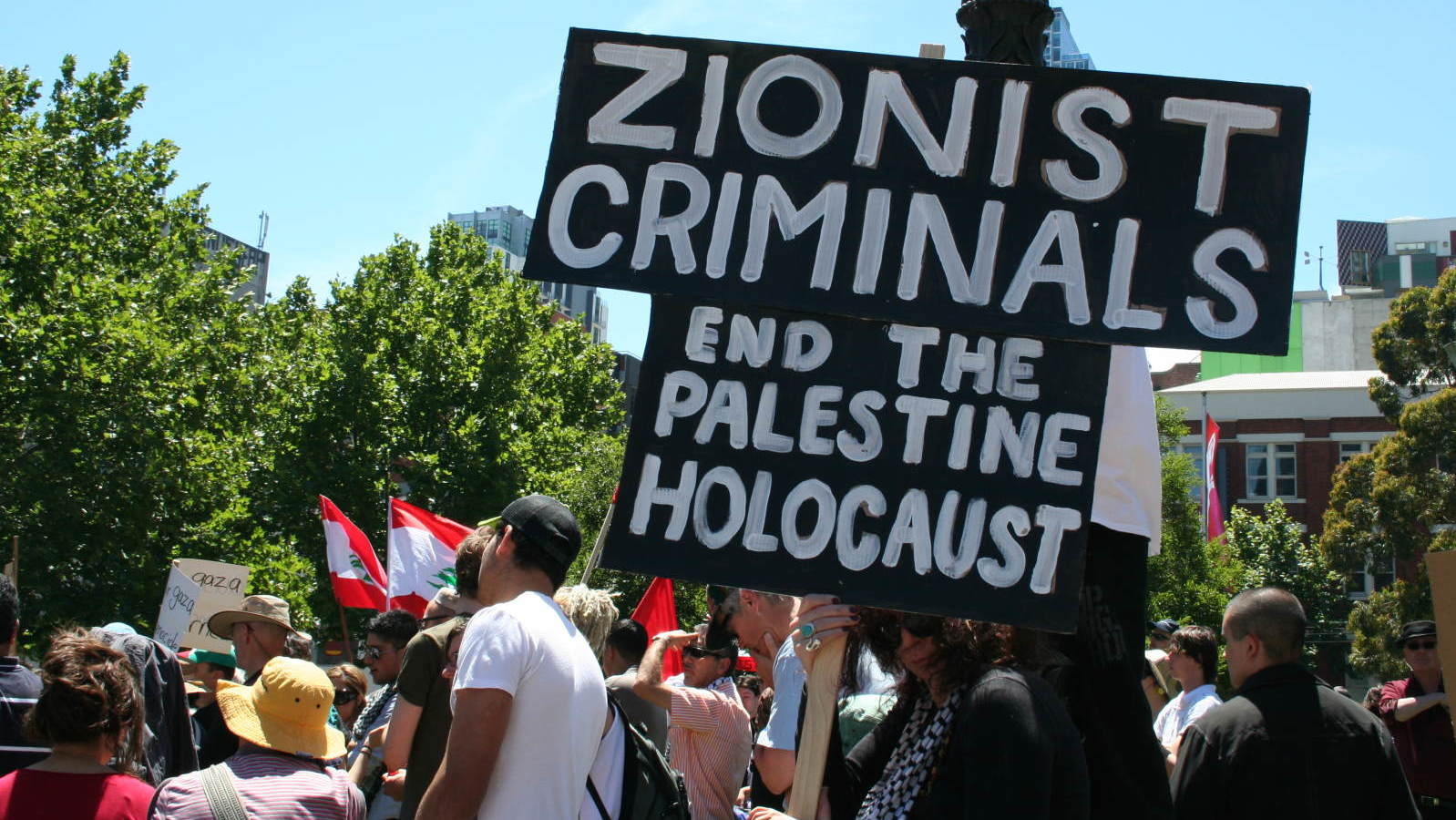
As explicit antisemitism faded in Europe in the years immediately after the Holocaust, and as the State of Israel, established in 1948, demonstrated its military strength and began drawing criticism for its occupation of lands with Arab populations, some Jews began to argue that opposition to Zionism was a new form of antisemitism. This concept gained wider currency in the late 20th and early 21st century, as criticism of Israeli policies toward the Palestinians intensified, prompting international campaigns to isolate Israel politically and boycott it economically. Proponents of this view argue that while criticism of Israeli policies is valid, certain extreme forms of criticism — such as the rejection of Israel’s right to exist or singling out Israel for severe reprobation while ignoring the human rights abuses of its neighbors — can be antisemitic.
The U.S. State Department in 2007 determined that demonizing Israel, comparing its actions to the Nazis, denying its legitimacy, and singling it out for excessive criticism are all contemporary manifestations of antisemitism. Critics of this definition have accused the Jewish community of using that charge to stifle legitimate criticism of Israel.
Some Arabs have also contested the use of the term antisemitism to refer solely to Jews, arguing that as speakers of a semitic language, they are “semites” as well.
Antisemitism Today

In the 21st century, there is ample evidence that antisemitism is again on the rise. Acts of violence against Jews and Jewish institutions, the persistence of antisemitic beliefs about Jewish power and the rise of political parties that traffic in explicitly antisemitic rhetoric and ideas, particularly in Europe, are all indications of persistent antisemitism.
Mostly consigned to the political fringes since the Holocaust, far-right European political parties have made significant electoral gains in recent years. In Hungary, the Jobbik party, whose leader in 2012 said Jews were national security risks who should be registered, is currently the country’s third largest party. Greece’s Golden Dawn party, whose leader uses the Nazi salute and has called the Greek government a “pawn of International Zionism,” is currently the country’s third largest. The National Front party in France, long stigmatized as harboring Holocaust deniers and antisemites, is polling stronger than ever in the run-up to the 2017 presidential election. Even in Germany, which has been especially vigilant about right-wing politics since Nazism’s defeat, the Alternative for Germany party only narrowly missed winning seats in parliament in 2013 and has since surged in national polling.
Moreover, surveys show that classically antisemitic views remain common. According to the Anti-Defamation League, a majority of adults in Greece, and more than one-third in France, harbor antisemitic beliefs, including that Jews have too much power in business and too much influence over American politics. Over 30 percent of Americans believe Jews are more loyal to Israel than to their home country. In the Middle East, the numbers are dramatically higher, with more than 80 percent of the population of some countries harboring antisemitic attitudes, according to the ADL.
Jews continue to be the targets of violence, sometimes by Muslim extremists in retaliation for Israeli military actions. In 2012, A French Muslim shot and killed four people, including three children, at a Jewish school in Toulouse, France. In 2014, four people died when a French Algerian man opened fire at the Jewish Museum of Belgium in Brussels. In 2015, two days after the killing of 12 people at the Charlie Hebdo satirical magazine in Paris, an allegiant of the Islamic State killed four people at a kosher supermarket in the French capital.
Far-right ideologies have also motivated antisemitic attacks in Europe. During Yom Kippur services in 2019, an armed neo-Nazi livestreamed himself as he attempted to enter a synagogue in Halle, Germany. After failing to enter the synagogue, he killed two people nearby.
Meanwhile, antisemitic incidents have been on the rise in the United States. In 2014, a former white nationalist leader killed three people in a pair of shootings at a Jewish community center and retirement community in Kansas. In 2016, Jonathan Greenblatt, the leader of the Anti-Defamation League, said American Jews have not seen as much antisemitism in public discourse since the 1930s.
The deadliest attack on the American Jewish community occurred on October 27, 2018, when a gunman entered the Tree of Life Synagogue in Pittsburgh during Shabbat services and opened fire, killing 11 people dead and wounding seven more. In 2019, Jews were also killed at a Chabad synagogue in Poway, California, and a kosher supermarket in New Jersey.
